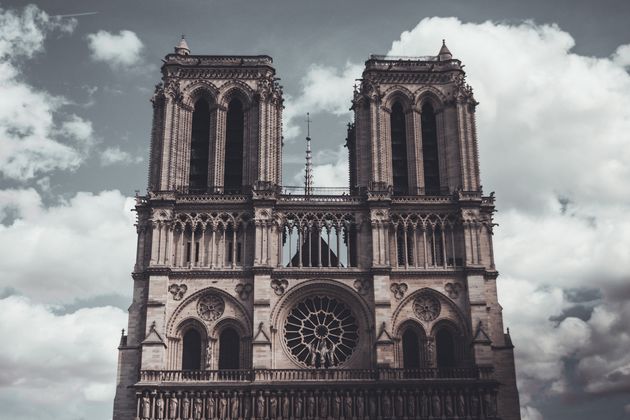![]()
What were people talking about in 2019? Find out in our review of the year
Looking back at 2019 from the aftermath of a December election, it’s easy to forget the stories outside the daily political wrangling that has become customary. But there was one major news story that made headlines across the world, and not just for the architecture profession. The destruction of part of Notre-Dame cathedral in April provoked an outpouring of emotion and money for the rebuild, and the story was the most searched news story on Google in the UK in 2019.
The story of the architectural competition announced shortly after the fire was also Icon’s most read story of this year, with a fierce debate raging on social media about whether or not to reconstruct the spire as it was.
Read on for more of the most read stories on Icon this year.

Notre-Dame: Competition for the reconstruction opens
When French prime Minister Édouard Philippe announced that the reconstruction of fire-damaged Notre-Dame would be an open architectural competition, the internet got inventive. Mock-ups of fanciful ideas including a swimming pool on the roof circulated on social media, while suggestions from firms including Foster and Partners offered creative new visions for the cathedral.
Debate raged most strongly around the issue of replacing the spire, with the architect leading the refurbishment, Philippe Villeneuve, calling for a replica of the 18th century design. The clash between Villeneuve and the political appointee overseeing the project resulted in the architect being told to ‘shut up’ in November – a war of words that you can read more about here.
Skateboarding and the city
An essay on skateboarding in existing spaces, complete with dramatic black and white photography by Fred Mortagne, tapped into a wider conversation about urban planning and cities. Exploring those parts of cities that have been re-appropriated by skateboarders – from London Bridge station steps to Barcelona’s modernist Museum of Contemporary Art – this feature highlighted the often-contentious relationship between city planners and skateboarders and questions of ownership of semi-public realms. It also came ahead of the reopening of the Southbank Centre Undercroft – an unofficial space used by skateboarders since the 1970s that reopened in September after years of campaigning for its restoration.
Crime Against Design: The leafblower

‘They exude a kind of weaponised machismo that is clearly aimed at something elemental in the suburban male’, wrote Edwin Heathcote as he put forward the case for the prosecution of the leafblower as a crime against design. Following his much discussed case against the Dyson handdryer from January 2017, the leafblower was found guilty of similar crimes, specifically its decibel level and the number of acceptable alternatives for the function demanded. The leafblower made it to the top of this year’s list of Crimes Against Design not just for its noise and fuel waste but for what it purports to say about its user.
Tackling mental health issues in architecture

A growing awareness of the impact of our environment on our mental wellbeing has led to increased discussion of designing buildings with a focus on physical and mental health. But within the profession, discussion of the impact of work on people’s health has only just started to gain traction. Ben Channon of Architects’ Mental Wellbeing Forum wrote about the lack of quantifiable information about the levels of anxiety, depression and other mental health problems among architects compared to the UK workforce as a whole, and launched a toolkit specifically aimed at people in the profession. The types of pressures architects face, including tight deadlines, large workloads and high client expectations are all contributors to stress and potential mental health problems, and the toolkit focuses on each to provide advice for individuals and practices on ways to tackle the specific issues within the industry.
Protecting London’s Alton Estate
![]() Alton House, Roehampton. Photo by Stephen Richards
Alton House, Roehampton. Photo by Stephen Richards
In July, the Twentieth Century Society released its list of UK buildings at risk of demolition, including the BFI IMAX in Waterloo, which opened in 1999, and the even more recently built British Library Centre for Conservation, which opened in 2007. The Alton Estate in Roehampton, south-west London, was also on the list as much of the complex – one of the largest council estates built in the UK – is set to be demolished and regenerated. Edwin Heathcote’s call to save the estate got people reading, with his explanation of the significance of the project, a rare example of British modernism, passionately putting the case for protection of ‘one of Britain’s most important, influential and successful council estates and a milestone in London’s architectural development.’

















